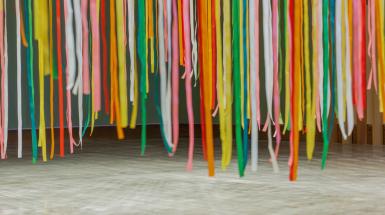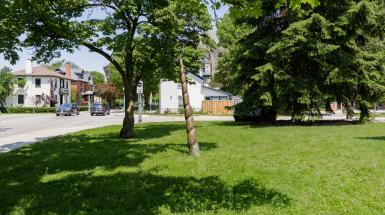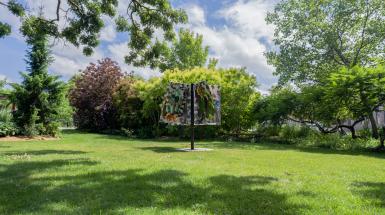
The Landscape is Dead
The idea of wilderness - land uncultivated and uninhabited by human beings - raises questions about how much truly natural land is left in a world that values production of goods over people and land. Forsey and Gaby-Trotz both explore these ideas in their work. Forsey explores land use, urban decay, and urbanization, while Gaby-Trotz examines the colonial history of our present-day relationship to water and land.
The Landscape is Dead examines our position as women on the climate emergency and brings together our creative perspectives as we explore the question of whether our planet can sustain us.
Our collaborative body of work explores the balance between hope and despair/art and climate change with the goal to create an interactive experience and space for contemplation to illuminate complex and troubling questions about where our environment is headed and invoke consideration for the post-modern landscape.
The landscape is more than the sublime, it also the edges of the wilderness and the urban domain.
Projects like this are more relevant than ever to reimagine climate change through art, reimagining through unimaginable threat(s).
The Landscape is Dead brings together the practices of Anna Gaby-Trotz and Richelle Forsey.
Anna Gaby-Trotz’s research explores digital technologies, photography, and printmaking. Her new body of work Baseline was exhibited at Open Studio in Toronto. Baseline examines the fear as we move forward as a human species we destroy the land that sustains us. Glaciers are melting, sea ice is receding and we do little to mitigate this.
Richelle Forsey is an interdisciplinary process-based creator and writer. Her practice explores storytelling, the built environment, seeking beauty in lapsed spaces, and aleatory outputs.
Her photography is influenced by Charlotte Cotton’s notion that photography is a “fabulously broad church” and “not just the physical end product of solitary artists’ endeavors”. Her work employs digital strategies such as drone photography, and analog processes to examine human activity on the landscape.
They work together and independently through interventions in their interpretations of the landscape.



















